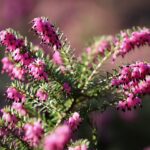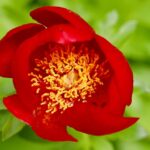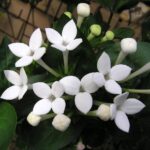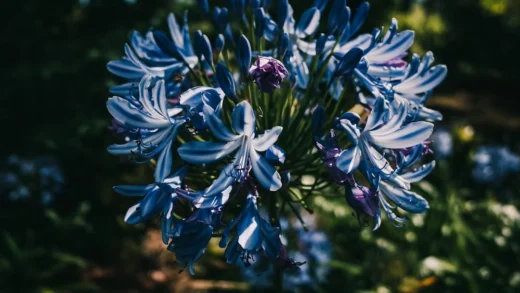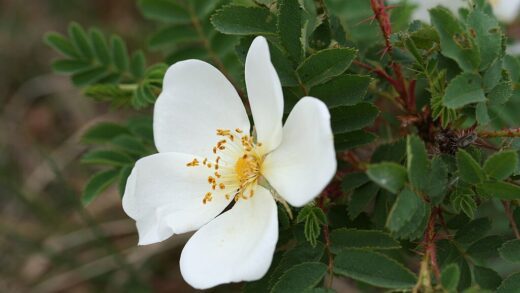Properly managing the water requirements of the Dieffenbachia is fundamental to its health and one of the most crucial skills for a grower to master. This tropical plant, native to the rainforests, has a distinct relationship with moisture, thriving in soil that is consistently moist but never waterlogged. The balance is delicate; too much water leads to the devastating effects of root rot, while too little causes stress, wilting, and browning of the leaves. Therefore, understanding the plant’s specific needs and developing a disciplined irrigation routine tailored to its environment is not merely beneficial but essential for its survival and flourishing.
The key to successful watering lies in observation rather than rigid scheduling. A common mistake among plant owners is to water on a fixed calendar day, such as once a week, without considering the actual moisture level of the soil. Factors like ambient temperature, humidity, light intensity, the size of the pot, and the type of soil mix all influence how quickly the soil dries out. A plant in a warm, bright location will use water much faster than one in a cooler, shadier spot. Consequently, the only reliable method for determining when to water is to physically check the soil before each irrigation.
Developing an intuitive feel for the plant’s needs comes with experience, but there are reliable indicators that can guide the process. The weight of the pot can be a good clue; a pot with dry soil is noticeably lighter than one with moist soil. The most direct method, however, is to insert a finger into the top layer of the soil. If the top 2-3 centimeters (about an inch) feel dry, it is generally time to provide water. This simple tactile test prevents both the premature watering of already moist soil and the prolonged dehydration of a thirsty plant.
Ultimately, the goal of a good watering strategy is to replicate the conditions of the plant’s natural habitat—a porous forest floor that is frequently wetted by rain but drains quickly, never allowing the roots to stand in stagnant water. By mastering the techniques of when and how to water, and by understanding the signs of both over- and underwatering, one can provide the Dieffenbachia with the consistent hydration it needs to produce and maintain its magnificent, lush foliage. This attention to its most basic need is the foundation upon which all other aspects of care are built.
Understanding the plant’s natural habitat
To truly grasp the watering needs of a Dieffenbachia, one must look to its origins in the tropical rainforests of the New World. In this environment, the plant grows as an understory species, shaded by the dense canopy of taller trees. It experiences frequent, often daily, rainfall, which thoroughly soaks the ground. However, the forest floor is composed of a rich, loose mix of decomposing organic matter, which allows this abundance of water to drain away rapidly. The soil remains consistently damp and humid, but the roots are never submerged in standing water for extended periods, as the porous structure ensures excellent aeration.
This natural cycle of frequent drenching followed by quick drainage is what we must aim to replicate in an indoor setting. The common misconception that tropical plants love to be “wet” often leads to overwatering. While they do thrive on consistent moisture, they are equally dependent on oxygen being available to their roots, a condition that is impossible in waterlogged soil. When soil becomes saturated, the air pockets are filled with water, and the roots essentially begin to suffocate. This lack of oxygen kills the root tissues, leading to rot and an inability to absorb water and nutrients, paradoxically causing the plant to wilt as if it were thirsty.
The high ambient humidity of the rainforest also plays a crucial role in the plant’s water balance. With humidity levels often exceeding 80%, the rate of transpiration—the process by which plants release water vapor from their leaves—is significantly reduced. This means the plant can retain more of the water it absorbs through its roots, placing less demand on the root system to constantly replenish lost moisture. In the typically dry air of a heated or air-conditioned home, transpiration rates are much higher, which can lead to the soil drying out more quickly and can cause issues like brown, crispy leaf edges if the humidity is not supplemented.
Therefore, a successful watering strategy for Dieffenbachia is not just about how much water is added to the pot, but also about creating a holistic environment that reflects its native conditions. This includes using a fast-draining soil mix that mimics the forest floor, watering in a way that flushes the soil thoroughly, and taking steps to increase ambient humidity. By understanding the interplay between rainfall, soil drainage, and atmospheric moisture in its natural habitat, we can provide our indoor plants with the balanced hydration they need to thrive.
Factors that influence watering frequency
The frequency with which a Dieffenbachia needs to be watered is not a static variable; it is a dynamic equation influenced by several interconnected factors in its environment. Light is one of the most significant drivers of water consumption. A plant situated in a location with bright, indirect light will have a higher rate of photosynthesis and growth, and consequently, a greater demand for water, compared to a plant in a lower light setting. As light levels change with the seasons, so too will the plant’s watering needs, requiring more frequent irrigation in the bright summer months and significantly less during the darker winter period.
Temperature and humidity are also critically important. Higher temperatures increase the rate of evaporation from the soil surface and the rate of transpiration from the leaves, causing the plant to use water more quickly. Conversely, in cooler conditions, these processes slow down, and the soil will remain moist for longer. The ambient humidity level works in tandem with temperature; in dry air, the plant loses more moisture through its leaves and will need more frequent watering, while in a high-humidity environment, the need for water is reduced. This is why plants may require more water in a dry, centrally heated home during winter, even though their growth has slowed.
The characteristics of the pot and soil play a direct role in how long the medium retains moisture. A small pot holds less soil and will dry out much faster than a large pot. The material of the pot is also a factor; porous terracotta pots allow moisture to evaporate through their sides, leading to faster drying times, whereas plastic or glazed ceramic pots are non-porous and will hold water for longer. Similarly, a dense, heavy soil mix will retain water for an extended period, while a light, airy, well-draining mix will dry out more rapidly, requiring more frequent watering but providing better protection against root rot.
Finally, the plant’s own stage of growth affects its water requirements. During the spring and summer, when the Dieffenbachia is actively producing new leaves and growing vigorously, its demand for water is at its peak. In contrast, during the autumn and winter, the plant enters a period of semi-dormancy where its metabolic processes slow down significantly. In this state, it uses very little water, and it is crucial to reduce watering frequency accordingly to prevent the soil from becoming waterlogged, which is a particularly high risk during the cooler, darker months of the year.
Proper watering techniques
The most effective and recommended technique for watering a Dieffenbachia is the “drench and dry” method. This involves watering the plant thoroughly until water freely flows out of the drainage holes at the bottom of the pot. This deep watering ensures that the entire root ball becomes evenly saturated, encouraging roots to grow down deep into the pot rather than just staying near the surface. After the initial drenching, it is absolutely essential to allow the pot to drain completely and to discard any water that has collected in the saucer or cachepot. Allowing the plant to sit in this runoff water is one of the quickest ways to induce root rot.
After a thorough watering, the “dry” part of the method comes into play. You should not water the plant again until the top layer of the soil has had a chance to dry out. For a Dieffenbachia, this typically means waiting until the top 2-3 cm (1 inch) of the soil feels dry to the touch. This drying-out period is critical as it allows air to penetrate the soil and provides the roots with the oxygen they need to function properly. This cycle of deep saturation followed by a partial drying period perfectly mimics the natural rainfall patterns in its native habitat.
An alternative method, known as bottom watering, can also be very effective. This technique involves placing the entire pot into a larger basin or sink containing several inches of water. The water is then absorbed up into the soil through the drainage holes via capillary action. Allow the plant to sit in the water for about 20-30 minutes, or until the soil surface becomes visibly moist. This method ensures that the soil is deeply and evenly hydrated from the bottom up and can help prevent issues like soil compaction and fungus gnats, which are attracted to damp topsoil. After bottom watering, let the pot drain fully before returning it to its saucer.
Regardless of the method used, the quality of the water can impact the plant’s health. Dieffenbachia can be sensitive to the chemicals commonly found in tap water, such as chlorine and fluoride, which can build up in the soil over time and cause brown, crispy leaf tips. If you notice this issue, it may be beneficial to switch to filtered, distilled, or rainwater. Alternatively, you can let tap water sit out uncovered for at least 24 hours to allow some of the chlorine to dissipate before using it to water your plants.
Recognizing signs of overwatering and underwatering
Identifying the signs of improper watering is a crucial skill for maintaining a healthy Dieffenbachia. Overwatering is the more dangerous of the two and often presents with symptoms that can be confusingly similar to underwatering. The most common sign of overwatering is the yellowing of the lower leaves, often followed by them becoming soft and mushy at the base before dropping off the plant. The soil will consistently feel damp or wet, and you might notice a sour or musty smell, which indicates that root rot has begun to set in. If the condition is advanced, the main stem of the plant may become soft and wobbly at the soil line.
When you suspect overwatering, you must act quickly to save the plant. First, stop watering immediately and allow the soil to dry out as much as possible. It can be helpful to move the plant to a spot with slightly better airflow to aid in this process. If the problem is severe, you may need to remove the plant from its pot to inspect the roots directly. Healthy roots are firm and white or light tan; rotted roots will be dark brown or black, mushy, and may easily pull away from the plant. Any rotted portions must be trimmed off with a sterile tool before repotting the plant in fresh, dry, well-draining soil.
The signs of underwatering are generally more straightforward. The plant’s leaves will begin to droop or wilt, and the soil will be visibly dry and may have pulled away from the sides of the pot. The lower leaves may turn yellow and become dry and crispy before falling off, and the edges of the leaves may turn brown and curl. While the plant looks distressed, a Dieffenbachia that is underwatered is usually much easier to revive than one that has been overwatered. A thorough watering, using the drench and dry method, will typically result in the plant perking up within a few hours.
To prevent future issues, the best approach is proactive monitoring. Make it a habit to check the soil moisture with your finger every few days, rather than relying on a strict schedule. This allows you to respond to the plant’s actual needs in real-time, taking into account the changing environmental conditions. By learning to read the plant’s signals and understanding the feel of the soil, you can consistently provide the right amount of water at the right time, keeping your Dieffenbachia healthy and vibrant.
The importance of water quality
While the quantity and frequency of watering are paramount, the quality of the water used can also have a long-term impact on the health of a Dieffenbachia. Many municipal water sources are treated with chemicals like chlorine and fluoride to make them safe for human consumption. While these are harmless to people, they can be detrimental to sensitive houseplants over time. These minerals and chemicals do not evaporate from the soil and can accumulate, leading to a buildup of salts that can burn the plant’s delicate roots and cause a condition known as “tip burn,” which manifests as brown, crispy edges and tips on the leaves.
Chlorine is a common additive that can be particularly harsh on tropical plants. Fortunately, chlorine is volatile, and its concentration in tap water can be significantly reduced by simply letting the water sit in an open container for 24 to 48 hours before use. This allows the chlorine gas to dissipate into the air, making the water much gentler for the plant. This simple, no-cost step can make a noticeable difference in preventing leaf-edge browning and promoting overall plant health.
Fluoride, on the other hand, is more problematic as it does not dissipate from water left standing. It is a more stable compound that will remain in the water and accumulate in the soil and plant tissues. Dieffenbachia, along with other plants like dracaenas and calatheas, is known to be particularly sensitive to fluoride toxicity. If your local water supply is heavily fluoridated and you are consistently seeing brown leaf tips despite proper watering practices, you may want to consider using an alternative water source.
The ideal water sources for sensitive plants are those that are naturally low in minerals and additives. Rainwater is an excellent, naturally soft option if you have the means to collect it. Distilled water, which has had all of its mineral content removed, is another perfect choice, though it can be costly for watering many plants. Filtered water, such as that from a reverse osmosis system or even a simple carbon-based pitcher filter, can also effectively remove many of these harmful substances. While not always necessary, switching to one of these purer water sources can often solve persistent issues with leaf health in sensitive species like Dieffenbachia.

